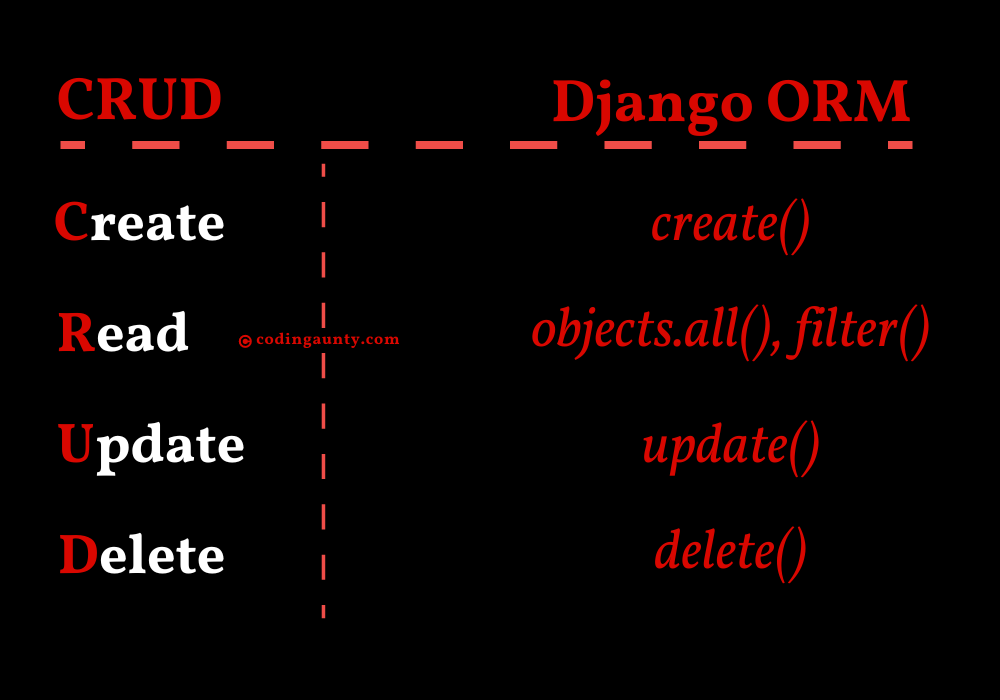CRUD Operations(Create, Read, Update, Delete) allow you to manage data stored in a database by creating, reading, updating, and deleting records. They are the basic building blocks of any web application, including those built with Django.
In Django, you can use Django’s Object-Relational Mapping (ORM) to perform CRUD operations on your database. This allows you to work with your database without having to write SQL queries manually. Django’s ORM provides an easy-to-use interface for performing database operations, which makes it simpler to create, read, update, and delete data.
Let’s take a closer look at each operation:

Create
The Create operation involves adding new data to the django database. Django ORMs allow you to use the create() method to add new records to your database. You can also use Django’s built-in forms framework to create forms that users can fill out to add data to your application.
Read
The Read operation involves retrieving data from the database. In Django, you can use the objects.all() method to retrieve all records from a table, or you can use the filter() method to retrieve specific records based on certain criteria. You can also use Django’s built-in pagination framework to limit the amount of data retrieved at a time, which can improve the performance of your application.
Update
The Update operation involves modifying existing data in the database. In Django, you can use the update() method to modify existing records in your database. You can also use Django’s forms framework to create forms that allow users to update existing data.
Delete
The Delete operation involves removing data from the database. In Django, you can use the delete() method to remove records from your database. You can also use Django’s forms framework to create forms that allow users to delete data.
By mastering CRUD operations in Django, you can easily manage your application’s data and provide a smooth user experience.
You can create, read, update, and delete data efficiently, and with Django’s built-in ORM, you don’t have to worry about writing complex SQL queries.
